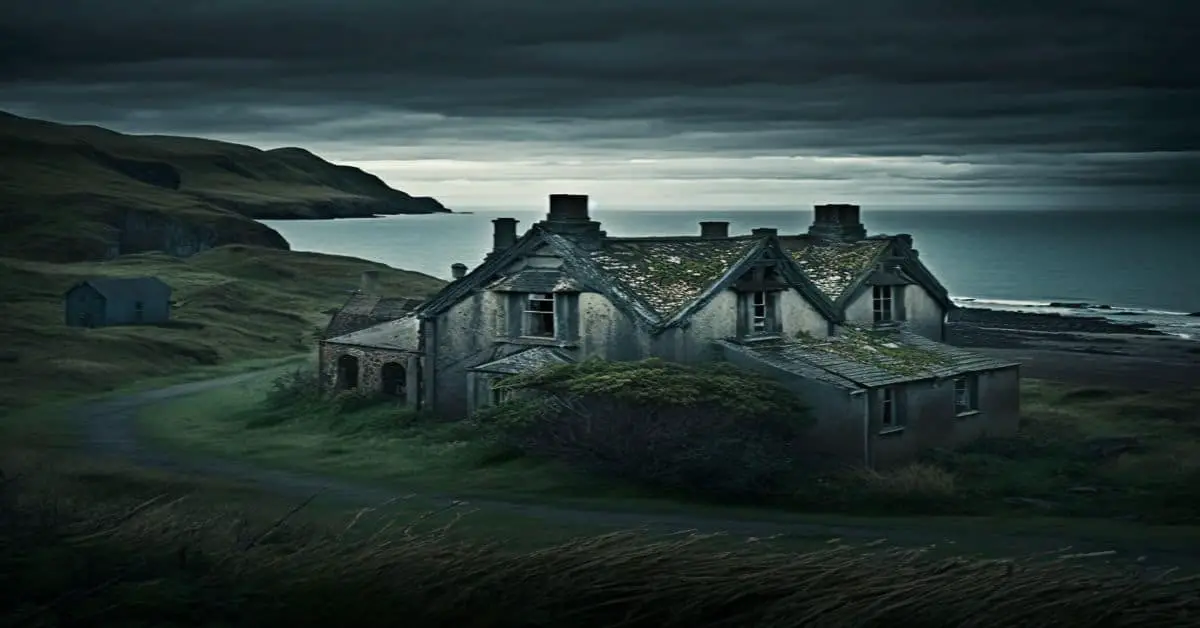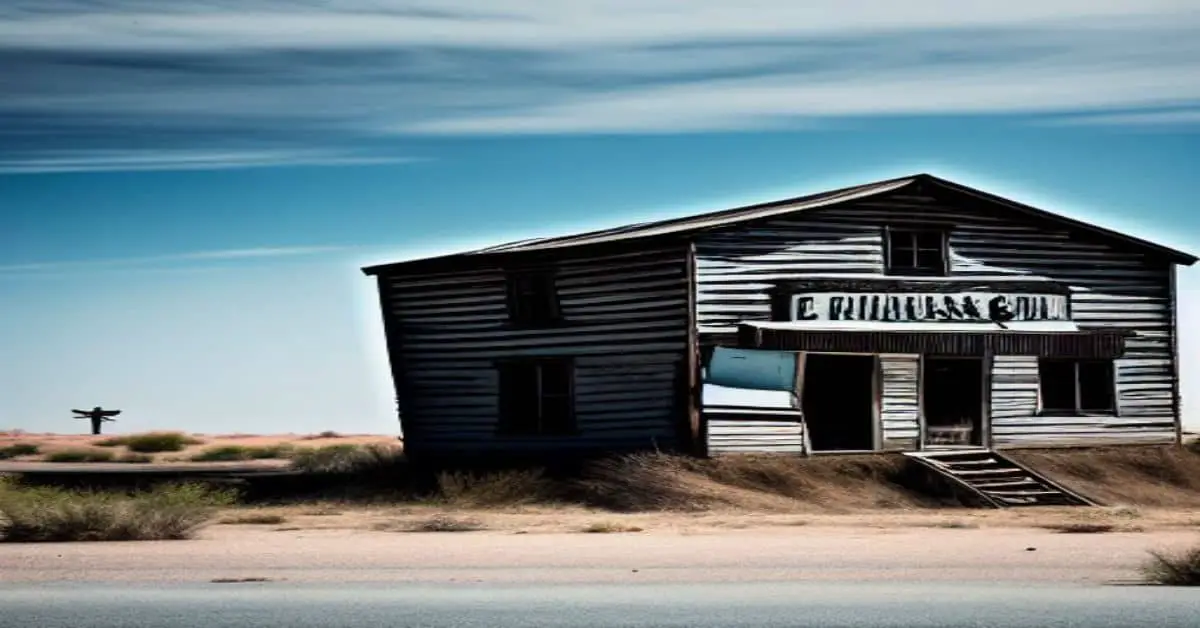Perched atop the mountains of Idaho, Rocky Bar is a town steeped in history and mystery. Once a bustling gold mining town, Rocky Bar saw its heyday in the late 1800s, when it was a contender for the site of territorial capital and held the county seat. However, a devastating fire in 1892 destroyed much of the town, leaving behind only a few buildings and a haunting legacy that still lingers today.
Despite its decline, Rocky Bar remains an intriguing destination for history buffs and ghost hunters. From the stories of a leading lady of the night, Peg Leg Annie, to the tragic death of Dutch Em, the town is filled with tales of ghosts and apparitions. Adding to its mystique is the legacy of Charles Sprittles, the last year-round resident of Rocky Bar, who is fondly remembered as the ‘Mayor of Rocky Bar.’
In this article, we delve into the fascinating history of Rocky Bar, Idaho, and explore the ghostly tales that make it a must-visit destination for history buffs and thrill-seekers.
Key Takeaways
- Rocky Bar was a gold mining town with a significant population boom in the mid-1860s, including a diverse community of Chinese immigrants.
- A fire in 1892 destroyed much of the town, leaving behind a haunting legacy that attracts history buffs and ghost hunters.
- Rocky Bar’s history is marked by the impact of mining operations, which caused significant damage to local ecosystems and displacement of Native American communities.
- Charley Sprittles, the last year-round resident of Rocky Bar, played an important role in the town’s development and is celebrated as the “Mayor of Rocky Bar”by citizens.
Gold Rush History
The discovery of gold on the Feather River in 1863 led to the toll road construction in 1864 and the subsequent population growth of Rocky Bar, making it a significant location in the history of the Gold Rush.
The boom attracted thousands of miners to the area, leading to the development of mining techniques and infrastructure necessary for the extraction of gold.
The gold rush also significantly impacted the indigenous communities who had lived in the area for centuries. The influx of outsiders displaced Native American communities, who were often forcibly removed from their homes to make way for mining operations.
Despite the wealth generated by the gold rush, the environmental and social costs were high. Mining operations often caused significant damage to the local ecosystems, polluting rivers and streams, and disrupting wildlife habitats.
“Gold was discovered on the Feather River in 1863 and a rush was on to what would be known as the South Boise diggings. Rocky Bar became the largest settlement in this new district.”
https://westernmininghistory.com/towns/idaho/rocky-bar/
The influx of outsiders also led to increased violence and conflict between different groups of miners and between miners and indigenous communities.
The legacy of the gold rush in Rocky Bar is complex, encompassing both economic success and environmental and social devastation.
Life in Rocky Bar
Life in this former gold rush town was marked by a significant population boom in the mid-1860s, with Rocky Bar serving as the county seat and a contender for territorial capital.
The town was home to a diverse community, including Chinese immigrants who settled along Steel Creek and contributed to the town’s economy.
However, living conditions were harsh and often dangerous, with frequent fires and deep snow in the winter. Despite these challenges, the community in Rocky Bar persevered and continued to grow.
The town boasted a jail, saloon, general store, and several houses before much of it was destroyed by fire in 1892.
Charley Sprittles, known as the ‘Mayor of Rocky Bar,’ owned the White Front Store and was a prominent figure in the community until his death in 1964.
Though the town is now a ghost town, the history of its community dynamics and living conditions continue to fascinate and intrigue visitors.
Legacy of Charles Sprittles
Charles Sprittles, a prominent figure in the community of Rocky Bar, left a lasting legacy that the citizens and visitors still remember of this former gold rush town. Sprittles, born in Wakefield, England in 1881, moved to Rocky Bar around 1932 and owned the White Front Store in town. He was known as the Mayor of Rocky Bar and was a beloved community member until his death in 1964 from a heart attack.
Although Sprittles was buried in Mountain View Cemetery in an unmarked grave, a memorial tribute was erected by citizens in Rocky Bar to honor his memory.
Sprittles’ impact on the Rocky Bar community can be felt today. He was known for his friendly demeanor and willingness to help anyone in need. Sprittles played an important role in the town’s development and was instrumental in maintaining its status as the county seat of Alturas County.
His contributions to the town and his status as a beloved community member are still celebrated by the citizens of Rocky Bar. Sprittles’ legacy serves as a reminder of the important role that individuals can play in shaping the communities in which they live.
Frequently Asked Questions
Are there any reported sightings of ghosts or paranormal activity in Rocky Bar?
Limited information on reported sightings of ghosts or paranormal activity in Rocky Bar is available. However, some local legends and Paranormal investigations have been conducted in the area due to its ghost town status and haunting history.
What is the current population of Rocky Bar and are there any plans for its restoration?
As of 2021, there is no official population in Rocky Bar, which is now considered a ghost town. However, there are efforts to restore the town’s historical significance and economic potential through preservation projects and tourism initiatives.
Was there any notable conflict or violence in Rocky Bar during its gold rush era?
During Rocky Bar’s gold rush era, violent incidents were common. Historical records show that 1868 a vigilante group hung two men for stealing gold. The town’s remote location made it a haven for outlaws and lawlessness.
What is the current state of the Chinese settlement along Steel Creek?
The current state of the Chinese settlement along Steel Creek in Rocky Bar, Idaho is unclear. There is no information available regarding restoration plans or population count.
Is there any evidence of the saloon or other buildings being preserved or restored for tourism purposes?
Preservation efforts in Rocky Bar have focused on maintaining the jail, general store, and a few houses. Unfortunately, there is no evidence of restoration for tourism purposes. The historical significance of the town remains intact.


